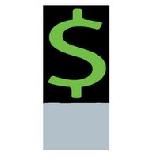
 |
|
| Financial Terms | |
| Depression |
|
Information about financial, finance, business, accounting, payroll, inventory, investment, money, inventory control, stock trading, financial advisor, tax advisor, credit.
Main Page: financial, payroll, tax advisor, inventory, finance, inventory control, accounting, stock trading, |
Definition of Depression
DepressionA prolonged period of very low economic activity with large-scale unemployment.
Related Terms:Great DepressionThe period of very high unemployment during the early 1930s. Average maturityThe average time to maturity of securities held by a mutual fund. Changes in interest rates BaneIn the words of Warren Buffet, Bill Bane Sr., is, "a great American and one of the last real traders Basic IRR ruleAccept the project if IRR is greater than the discount rate; reject the project is lower than the Basis pointIn the bond market, the smallest measure used for quoting yields is a basis point. Each percentage CapitalizedRecorded in asset accounts and then depreciated or amortized, as is appropriate for expenditures Earnings surprisesPositive or negative differences from the consensus forecast of earnings by institutions  Efficient portfolioA portfolio that provides the greatest expected return for a given level of risk (i.e. standard Equity capAn agreement in which one party, for an upfront premium, agrees to compensate the other at InsolventA firm that is unable to pay debts (liabilities are greater than assets). Level payThe characteristic of the scheduled principal and interest payments due under a mortgage such that Liquidity preference hypothesisThe argument that greater liquidity is valuable, all else equal. Also, the Long runA period of time in which all costs are variable; greater than one year. Long-termIn accounting information, one year or greater. Long runA period of time in which all costs are variable; greater than one year. Marketplace price efficiencyThe degree to which the prices of assets reflect the available marketplace  Net financing costAlso called the cost of carry or, simply, carry, the difference between the cost of financing NoteDebt instruments with initial maturities greater than one year and less than 10 years. Out-of-the-money optionA call option is out-of-the-money if the strike price is greater than the market price Oversubscribed issueInvestors are not able to buy all of the shares or bonds they want, so underwriters must Positive convexity property of option-free bonds whereby the price appreciation for a large upward change Synergistic effectA violation of value-additivity whereby the value of the combination is greater than the Theoretical spot rate curveA curve derived from theoretical considerations as applied to the yields of Tobin's QMarket value of assets divided by replacement value of assets. A Tobin's Q ratio greater than 1 TurnoverMutual Funds: A measure of trading activity during the previous year, expressed as a percentage of Yield curveThe graphical depiction of the relationship between the yield on bonds of the same credit quality financial leverageThe equity (ownership) capital of a business can serve economic integrationthe creation of multi-country markets economically reworkedwhen the incremental revenue from the sale of reworked defective units is greater than overapplied overheada credit balance in the Overhead account Pareto principlea rule which states that the greatest effects procurement carda card given to selected employees as a surplus variablea variable used in a linear programming problem that represents overachievement of a minimum requirement; it is associated with greater-than-or-equal-to constraints variancea difference between an actual and a standard or Candlestick chartA financial chart usually used to plot the high, low, open, ConvexityA measure of the rate of change in duration; measured in time. Constant dollar accountingA method for restating financial statements by reducing or Fixed assetAn item with a longevity greater than one year, and which exceeds a company’s Intangible assetA nonphysical asset with a life greater than one year. Examples are Capital MarketThe market in which savings are made available to those needing funds to undertake investment projects. A financial market in which longer-term (maturity greater than one year) bonds and stocks are traded. Comparative AdvantageA country has a comparative advantage over another country in the production of good A if to produce a unit of A it forgoes more of the production of good B than would the other country when it produces a unit of good A. Its efficiency in the production of good A relative to its efficiency in the production of good B is greater than is the case for the other country. See also absolute advantage. Okun's LawChanges in employment give rise to greater-than-proportional changes in output, by a factor of about 2.5. Creative Acquisition AccountingThe allocation to expense of a greater portion of the price DiversificationInvesting so that all your eggs are not in the same basket. By spreading your investments over different kinds of investments, you cushion your portfolio against sudden swings in any one area. Segregated equity funds have become a popular and secure way for average investors to get the benefits of greater diversification. Longer-Term Fixed AssetsAssets having a useful life greater than one year but the duration of the 'long term' will vary with the context in which the term is applied. Mezzanine DebtRefers to non-conventional debt that has a greater element of risk than secured debt but has less risk than equity. bondA debt security issued by a government or company. You receive regular interest payments at specified rates while you hold the bond and you receive the face value when it matures. Short-term bonds mature in less than five years; medium-term bonds mature in six to ten years; and long-term bonds mature in eleven years or greater. Related to : financial, finance, business, accounting, payroll, inventory, investment, money, inventory control, stock trading, financial advisor, tax advisor, credit. |